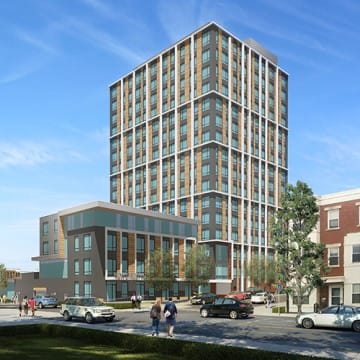Pepperwood
Pepperwood is a research institute that manages a 3,200-acre field station and produces cutting-edge conservation science. The preserve serves as a living laboratory for wildfire resilient land management in Northern California. Since the October 2017 Tubbs fire, Pepperwood also has become a model for resilient rebuilding.
The Tubbs fire, which at the time was the most destructive fire in California’s history, burned right through Pepperwood. “There’s been a lot of development in that fire corridor, so the building up of fuels, the natural patterns of fire, the terrain, the fuel types . . . they all exacerbated it. It was a devastating, catastrophic fire,” says Antonio Pares, principal at Mithun, whom Pepperwood hired for the rebuild.
“With a really short turnaround time for evacuation, the Tubbs fire was a life and death situation for members of my team. And we lost six structures that night,” says Lisa Micheli, president of the Pepperwood Foundation. The only major Pepperwood structure to survive the Tubbs fire was the Dwight Center for Conservation Science, which was the newest building on the property and had been fabricated out of steel and built into the lee side of a hill. The remainder of the structures, including Pepperwood’s office and environmental education facilities, were built in the 1950s or earlier and were primarily constructed of traditional redwood shingle.
WILDFIRE RESILIENCE STRATEGIES
Pepperwood is rebuilding three structures. A 2,000-square-foot barn and office, a 1,900-square-foot residence for an on-site manager, and a 3,000-square-foot duplex for other staff and visiting scientists that will cost approximately $1 million, $1.5 million, and $2.5 million, respectively, to rebuild. The rebuild team considered if the structures should be rebuilt on the same locations and decided their locations were optimal and necessary for their uses (although the footprint of one of the residences was reduced).
Other initial steps included analyzing the historical fire patterns in the area and establishing priorities. “We had two goals. One was to build as nontoxically as possible and the other was to build in as much fire-resistant capacity as possible,” says Micheli. The new buildings have a mix of noncombustible metal exteriors and cement fiber panel cladding as well as cement plaster walls and dense black locust decking to reduce flame spread. The buildings also have zero-VOC (volatile organic compound) clay walls in some areas and in others, low-VOC paint. The surrounding landscape is beautiful and carefully planned but includes little vegetation as part of creating defensible space.
“One goal was to build as nontoxically as possible, and the other goal was to build in as much fire-resistant capacity as possible.” -Lisa Micheli, President, Pepperwood Foundation
In acknowledgment of the affordability concerns, Pares says the rebuild has “a nuanced approach where you’re really thinking about how fire acts in relationship to a structure,” which led to including many preventative measures for ember ignition such as optimal screening of openings, placement and orientation of vents, and eliminating structural depressions where embers could collect.
BUSINESS OUTCOME
Results from the Tubbs fire demonstrate that the land management strategies that Pepperwood practices and studies do have a positive effect. Staff noticed that the only areas not severely burned in 2017 were those that had previously been treated with prescribed, controlled burns to reduce vegetative fuel. Pepperwood’s response to the Tubbs fire also helped prepare it to survive the 2019 Kincade fire. “In 2019, only about half the property burned. We were able to prevent the fire from getting to the rebuild sites,” says Micheli. Ongoing construction on three buildings was also able to continue in 2020 because fire rebuilds are considered essential businesses and were not halted for the coronavirus pandemic.
Pepperwood now serves as a focal point for the protection of the wider community. It is part of a fire camera network, with two cameras that provide virtual, real-time data to firefighters about onsite conditions. The California Department of Forestry and Fire Protection (CALFIRE) used Pepperwood as a staging area to fight the Kincade fire—the cameras were vital sources of information and assisted CALFIRE in preventing the fire from progressing further in that area.
The rebuild has led to many lessons learned for a team that does not specialize in large-scale construction projects, let alone complicated rebuilds. With more upfront knowledge about total cost, Micheli says, “I probably would have scaled back on some of the houses’ amenities.” However, she thinks the extra resilience measures are worth the cost, saying, “What we’re getting are incredibly resilient structures that are going to be in use for the next century of our organization.”
The total cost of the rebuild is about $5 million, including an estimated $1.25 million in sustainability and resilience improvements over what insurance would cover. Pepperwood launched a capital campaign to raise the difference and received large legacy gifts from several donors. The resulting structures will exceed local code requirements and are of significantly higher quality and resilience than the original buildings, especially with regard to the nontoxic materials.
Figuring out the insurance claim was a lengthy and difficult process that involved eight individuals negotiating for more than 12 months. Micheli’s advice to other property owners is to make sure that they have detailed site information before a disaster occurs, as one way to mitigate the difficulty of the process.
Antonio Pares’s main lesson learned on the design side is “to keep the buildings as simple as possible . . . and address the vulnerabilities of traditional structure” to ember ignition.


